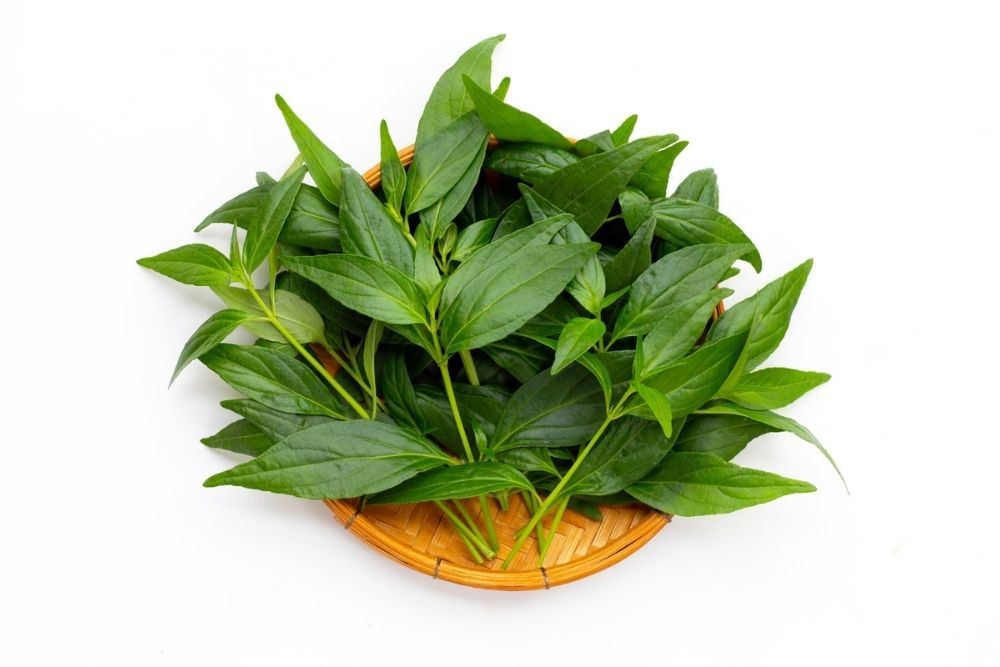What’s New?
Animal studies show that fasting could improve brain function, increase nerve cell synthesis and protect against neurodegenerative conditions, such as Alzheimer’s disease and Parkinson’s.

Fasting: Ancient Wisdom for Modern Times
Have you wondered what’s behind all the renewed scientific interest in fasting? It may surprise you to learn that fasting is thought to be among one of the oldest therapeutic methods. From the ancient to the modern yogis, from Plato and Socrates to Hippocrates, fasting has been regarded as a curative and rejuvenative health measure. In fact, in recorded scientific history it is noted that humans (and most animal species) instinctively stopped eating when ill and abstained from food until health was restored. So what is fasting and how can it help support your health?
What is Restorative Fasting for Optimal Health?
To be clear, we are not referring to “fasting fads” that focus on unsafe practices for weight loss. That is not the true intention of fasting. Rather, fasting is a carefully planned period of significant reduction of food intake that allows the digestive system a chance to reset. This period of rest helps to support the body’s innate ability to detox more efficiently which can allow it to better withstand the stresses brought upon by modern living (e.g., work, stress, eating habits, environment, etc.).
What are the Health Benefits of Restorative Fasting?
Though the science of fasting is still evolving, researchers have been looking closely at the health benefits that fasting offers to both healthy adults as well as those with chronic health conditions (such as obesity, heart disease, diabetes, and even cancer).
Health Benefits of Fasting
- Reduces inflammation
- Lowers triglyceride levels, which decreases risk for heart disease
- Stimulates the liver to process toxins more efficiently
- Promotes movement of bowels
- Improves circulation
- Enhances sweating, which facilitates release of impurities
- Enhances awareness of appetite and cues for eating
- Improves regulation of hormones associated with appetite
- Enhances metabolic use of stored fat
Note: To be truly restorative, fasting is paired with a reduction in mental and physical activity.
Fasting Requires Professional and Personal Support
Any fast should be done with medical supervision. The approach that is right for any given person depends on many factors, such as a person’s age, health history, health concerns, current diet, lifestyle choices (smoker/non-smoker), and stress level. A qualified holistic doctor or nutritionist can best advise on a fasting schedule that suits an individual. A fast can be done for 2-7 days and can include specific types of food (if any) and types of fluids (juices, herbal teas, water) to be consumed. Additionally, fasting is not something to jump into spontaneously and it requires significant preparation. The desired results would be best achieved by setting an intention, mindfully preparing one’s personal space, creating a supportive environment and schedule, and ensuring one has any necessary social and emotional support.
Fasting at Home versus at a Fasting Retreat Center
If you have diabetes, are pregnant, have any type of metabolic or feeding disorders, have a history of disordered eating or exercise addiction, it is imperative that you consult with a medical professional before embarking on any type of fast.
If you aren’t able to locate a qualified holistic doctor to supervise a fast for you to do from home, or if your home environment is not conducive to the tranquility needed during a fast, you might want to consider attending a fasting retreat center. There are many across the U.S. and internationally. Be sure to inquire with your holistic medical provider about fasting centers or approaches that you can safely and effectively implement from home.
When done properly, fasting can be a challenging yet invigorating experience that rewards the mind, body, and spirit.

Celery Brings a Crisp, Strong Flavor to Meals
Celery (Apium graveolens) is a biennial plant with pinnate, feathery leaflets and aromatic seeds. Commonly found in marshy, salty soils in coastal Europe and temperate Asia, celery was originally harvested for its strong-flavored leaves for culinary use..
As a medicinal food, celery is an excellent choice to include during fasting. All parts of celery–seed, leaves, stalk, and the taproot– have medicinal value. The plant compounds in celery act as a nervine (calming agent) which helps in relaxing the organs of digestion and elimination, has diuretic effects, and acts as a tonic.
- The root, leaf and seed are used in various preparations for purifying the blood, regulating digestion and bowel movements, calming the nerves, and may be helpful for kidney and gallstones.
- Celery seed tea is commonly used to relieve indigestion, flatulence, and griping abdominal pains.
- Celery’s detoxifying phytochemicals reduce blood acidity, which is common with tissue inflammation.
- In Ayurveda, celery stalk juice is commonly used for preventive remedies, during cleanses, and in times of illness.
Cultivated worldwide, celery stalks each produce three to five bright green pinnate leaves at the tip. The celery fruits, or schizocarps, contain a brown, ridged, ovoid-shaped, very small seed. These fruits, commonly known as “celery seed,” have a floral odor and mildly pungent taste. The succulent, rigid stalk can be eaten raw or cooked. The fleshy taproot (known as celeriac) can be enjoyed raw, roasted, mashed, or pureed, and the celery seeds can additionally be used in many types of condiments.

Celery and Kale Soup
Flavor and nutrition galore are packed into this wonderful soup featuring crisp celery and chopped baby kale. Prepare with or without chicken, using vegetable or chicken broth. Serve with a hearty, crusty bread for dipping your favorite breadstick. Great for lunch, dinner, or an appetizer on a chilly day.
Prep: 15 mins Cook: 35 mins Total: 50 mins
Servings: 6 Yield: 6 servings
Ingredients
- 3 Tbsp olive oil, or as needed
- 1 large onion, diced 5 carrots, sliced
- 5 stalks celery, chopped
- salt and ground black pepper to taste
- 2 cloves garlic, minced
- 1 (32 oz) container chicken (or vegetable) stock
- 1 (15 oz) can black beans, drained and rinsed
- 1 (15 oz) can cannellini beans, drained and rinsed, divided
- 1 cup chopped kale, or to taste
- 1 tablespoon apple cider vinegar, or to taste
Poultry Option: Add seasoned, precooked (grilled or boiled) chicken breast in the last minutes of cooking.
Preparation
- Heat olive oil in a stockpot over medium heat; cook and stir onion, carrots, celery, salt, and pepper in the hot oil until carrots are tender, 10 to 15 minutes. Stir garlic into vegetable mixture and cook until fragrant, about 2 minutes.
- Stir chicken (or vegetable stock), black beans, and 1/2 can cannellini beans into vegetable mixture.
- Blend remaining 1/2 can cannellini beans in a food processor or blender until smooth; stir into vegetable mixture. Add kale and apple cider vinegar to vegetable mixture; bring to a boil. Reduce heat and simmer until flavors have blended, 20 to 30 minutes.

Support for Natural Detox with Andrographis
While fasting, the body has the opportunity to flush out toxins that it may have been sluggishly trying to move out through respiration, excretion, sweating and other innate physiological processes. This can temporarily increase activity on the organs of detoxification, particularly the liver. To support this increased activity and to bolster immunity, holistic practitioners may suggest taking Andrographis.
An essential remedy used for centuries by practitioners of both Ayurvedic Medicine and Traditional Chinese Medicine, Andrographis paniculata is known to help protect the liver and supports the production and movement of bile. The active compound in the plant is a group of plant chemicals called andrographolides, which have several mechanisms of action in the body. Research has shown these actions to include:
- Stimulating the body’s innate and adaptive immune defenses when foreign invaders are identified in the body
- Supporting a healthy inflammatory response and mitigating excessive inflammation by blocking free radical activity in the body
These powerful actions come from a plant that produces unassuming, delicate white and purple flowers that bloom from the ends of tiny stems attached to tall, skinny stalks. The herb is quite bitter, so it is not often used in teas unless carefully blended with other herbs to improve the flavor profile and medicinal benefit. A capsule or tincture is the most common way to use Andrographis.
Andrographis may be used preventatively, as well as during active infection. It is best to use Andrographis while under the care of a holistic health practitioner who can make appropriate recommendations for how much and how often to take this botanical medicine. Persons who are pregnant or lactating, or who are in treatment for other medical conditions, should not take Andrographis without first speaking with their healthcare provider.

L-Tyrosine
During fasting, each person responds differently to the mental and physical challenge of refraining from eating-especially in the beginning or when a person is fasting for the first time. One person may feel just fine; not bothered by hunger pangs, loss of energy or fluctuations in energy, and may remain focussed and alert. Other people will struggle with hunger cues, cravings, feeling lethargic, and become focused on the absence of food. L-Tyrosine (Tyrosine) is one of the nutritional supplements that can help support the body as it goes through adjustments in a fast.
Tyrosine is a non-essential amino acid produced by the body that helps build proteins. In addition, this amino acid plays a role in the production of enzymes, thyroid hormones, and the brain chemicals (neurotransmitters) that help nerve cells communicate.
While not all benefits of Tyrosine have been proven through research, health scientists are looking at how it might be used to address certain health conditions and support wellness. For example:
- Tyrosine is particularly important in the production of the neurotransmitters epinephrine, norepinephrine, and dopamine-all of which have an effect on mood. During a fast when you might experience irritability, Tyrosine may support mood stability.
- Tyrosine plays a role in circadian rhythm; it may be beneficial for helping people with narcolepsy and insomnia. During a fast, it may help with fatigue and restlessness.
Tyrosine is normally acquired from food such as poultry, fish, avocado, nuts, seeds, and yogurt. When following a fasting protocol, tyrosine can be taken as a tablet or capsule. Caution is required when taking a single amino acid supplement as this can affect the body’s nitrogen balance, have a detrimental effect on metabolism, kidney function, and the production of growth hormone and the skin pigment melanin. Children, pregnant and lactating women, and people who take thyroid medications or supplements should use Tyrosine under the supervision of a holistic healthcare provider.

Can an Enema be of Benefit to You?
Since ancient times, there have been various methods described to cleanse the internal organs of digestion and elimination. Yes, even our ancestors understood that a well-maintained and properly functioning gastrointestinal system is essential to good health and well-being. An enema is a simple and gentle procedure used in holistic medicine to address GI problems (such as constipation) and to support the body’s innate detoxification processes.
What Does an Enema Do?
An enema is an injection of liquid via the anus, intended to relieve constipation, gas and bloating, cleanse the colon, and reduce the body’s toxic load. There are a variety of liquid solutions that can be used to perform an enema. Some common enemas ingredients are:
- Aloe Vera: to soothe and heal the GI tract
- Burdock root: to improve kidney and bladder function and remove calcium build-up
- Coffee extract: to detoxify the liver, intestines, and promote movement of bile
- Epsom salt: to increase water in the intestines and facilitate movement of the bowels
- Lemon juice: to detoxify and flush out excess feces; to balance pH level in the colon
The various liquid solutions used for an enema offer different benefits and depending on your personal health concerns, one method may be more appropriate than another. It is advisable to discuss doing an enema with your holistic practitioner so the appropriate method can be chosen for you.
Tips for an Easeful Enema
An enema is not painful or difficult to do on your own. As mentioned, it is ideal to do an enema under medical supervision. If you are using a prepared formula from any other source, make sure to read the ingredients. If anything is unfamiliar to you, don’t use it. Be sure you follow the instructions provided.
- Rest the day of and the day after the enema
- Drink plenty of hydrating fluids such as decaffeinated teas, herbal drinks, and fruit infused water
- Maintain a diet of light, small, nourishing meals such as soft, steamed foods, juiced fruits and vegetables
- Slowly return to a healthful diet by introducing small meals with whole foods; continue to maintain hydration and avoid caffeinated/sugary beverages for a few days
- Return to your normal routine within about 24-48 hours
It is possible for an enema to “go wrong.” If not carried out properly, if done too frequently, or if inappropriate substances are used, the enema can cause bloating, constipation, cramping, nausea and diarrhea. This can lead to an imbalance in gut flora, irritation or injury to the intestinal wall, and even bleeding from the rectum. Enemas should not be done more than once every three months unless medically supervised or prescribed by a holistic medical provider to treat a specific condition.
There are fasting retreat centers and holistic practitioners that specialize in enemas as part of a detox or “total body cleanse.” Attending a reputable center for a guided experience is a great place to start.






